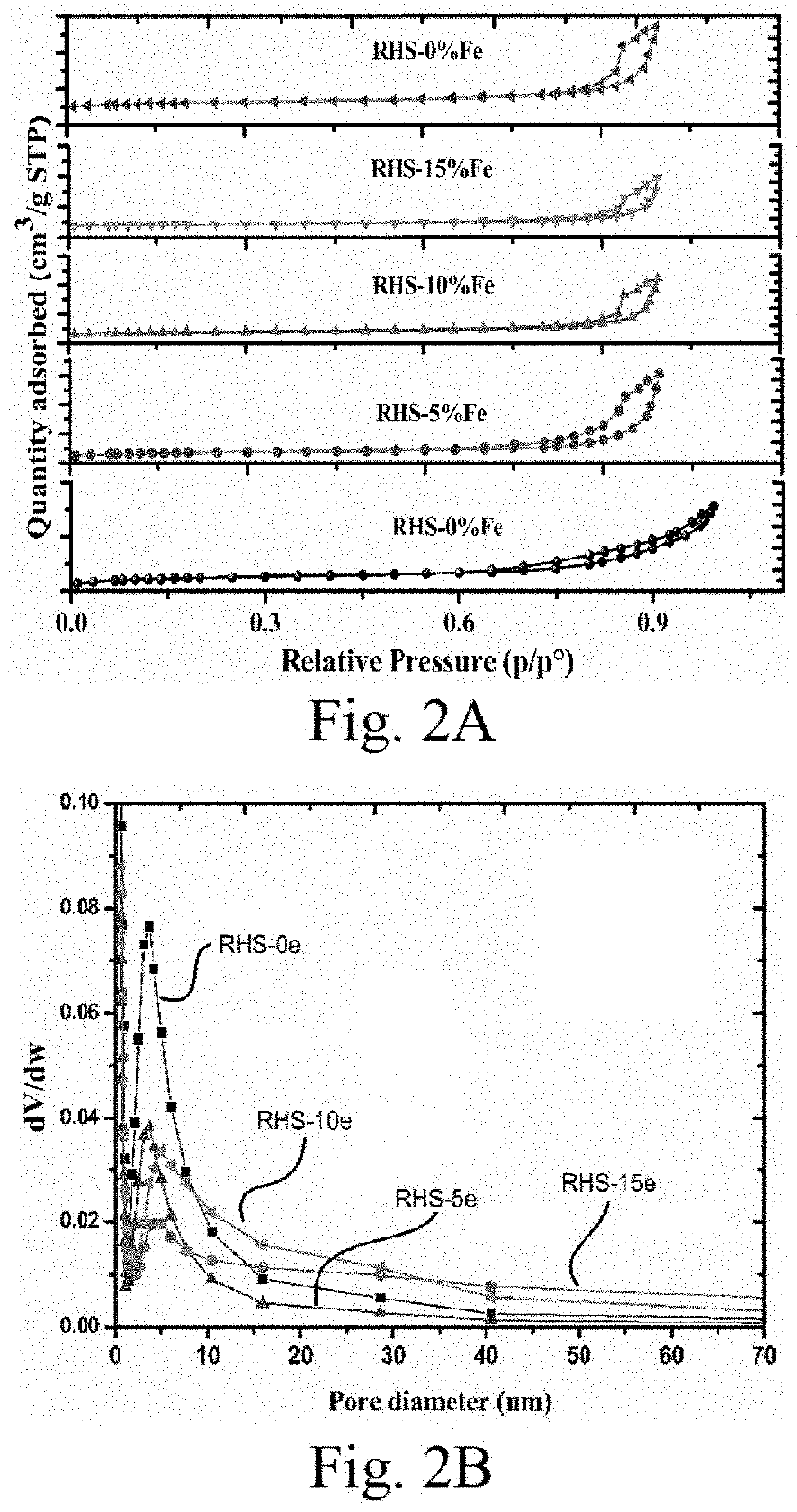Droplet-impingement, flow-assisted electro-fenton purification using heterogeneous silica/iron nanocomposite catalyst
- Summary
- Abstract
- Description
- Claims
- Application Information
AI Technical Summary
Benefits of technology
Problems solved by technology
Method used
Image
Examples
examples
[0081]CHEMICAL AND MATERIALS: All chemicals described herein were of analytical grade quality and were used as received without further purification. Acebutolol hydrochloride (ACE, at least 98% pure) and propranolol hydrochloride (PROP, at least 99% pure) were purchased from Sigma-Aldrich (Deisenhofen, Germany). Ferric nitrate, Fe(NO3)3.9H2 (98.5%), cetyltrimethylammonium bromide (CTAB), nitric acid, sodium hydroxide, sulfuric acid, hydrochloric acid, acetone, sodium chloride, and glycerol were purchased from Sigma-Aldrich (St. Louis, USA). Acetonitrile, formic acid, and methanol (LC-MS grade) were purchased from Fisher Scientific (Schwerte, Germany). In all experiments, a 0.05 M Na2SO4 solution was used as a supporting electrolyte. An Si / BDD electrode with 2.75 μm BDD thin layer thickness (both sides) deposited on a conductive Si sheet, was purchased from NeoCoat (Switzerland). A graphite felt electrode (GFE) based on 5 mm thick PAN was purchased from Shanghai Qijie Limited Co. (Chi
PUM
| Property | Measurement | Unit |
|---|---|---|
| Temperature | aaaaa | aaaaa |
| Time | aaaaa | aaaaa |
| Time | aaaaa | aaaaa |
Abstract
Description
Claims
Application Information
 Login to view more
Login to view more - R&D Engineer
- R&D Manager
- IP Professional
- Industry Leading Data Capabilities
- Powerful AI technology
- Patent DNA Extraction
Browse by: Latest US Patents, China's latest patents, Technical Efficacy Thesaurus, Application Domain, Technology Topic.
© 2024 PatSnap. All rights reserved.Legal|Privacy policy|Modern Slavery Act Transparency Statement|Sitemap



